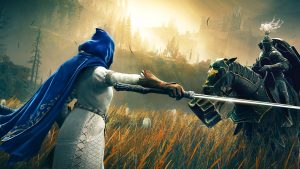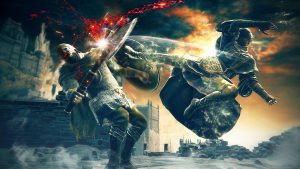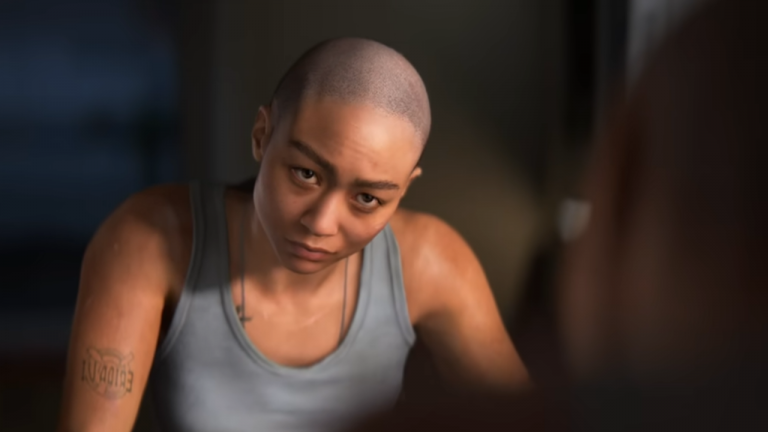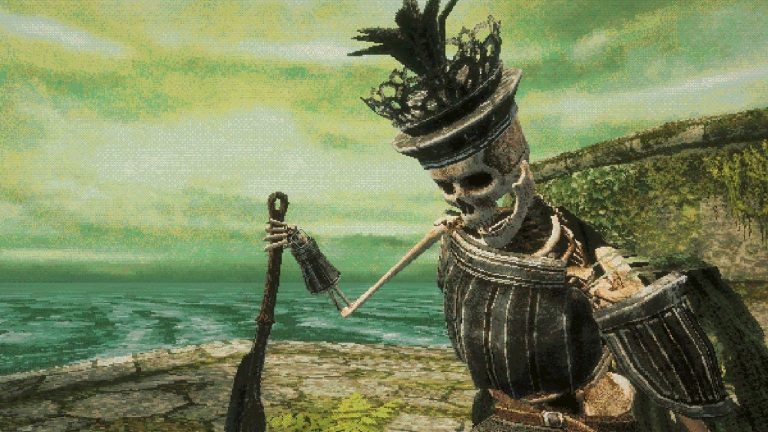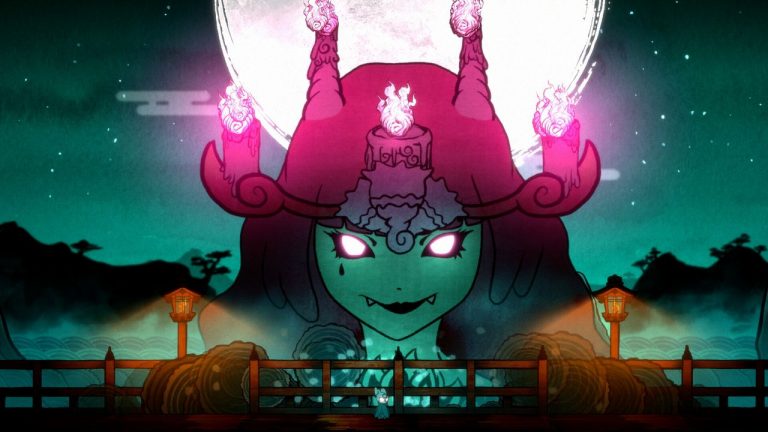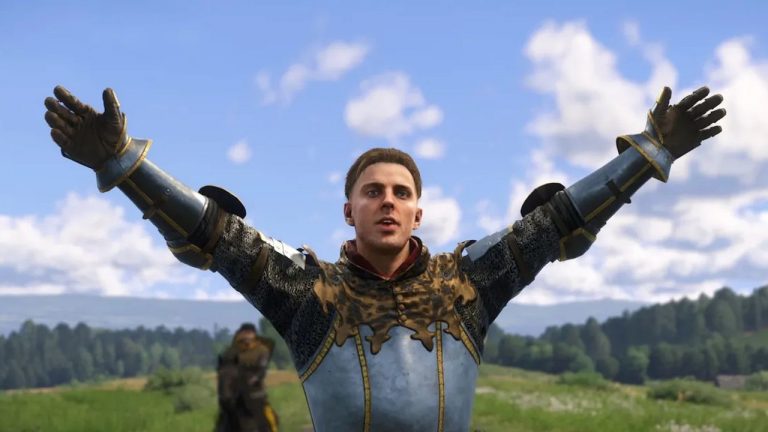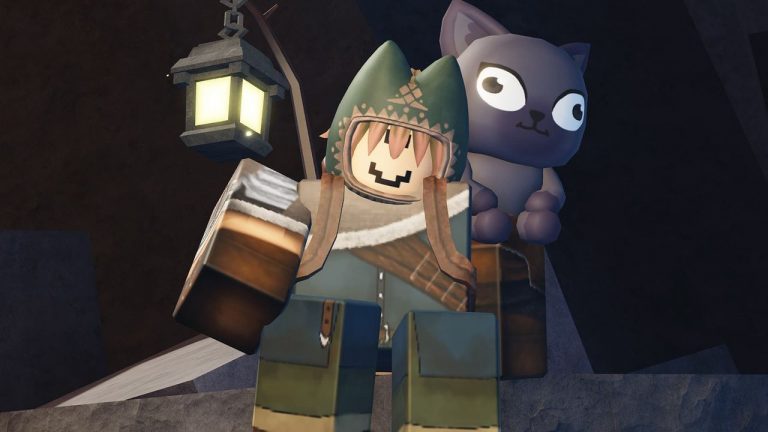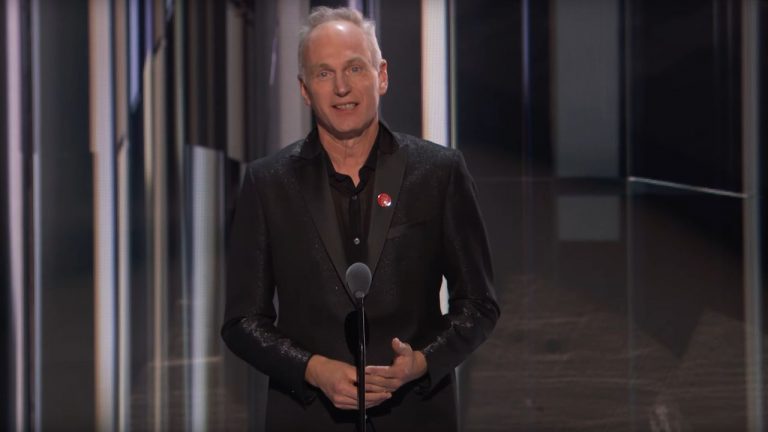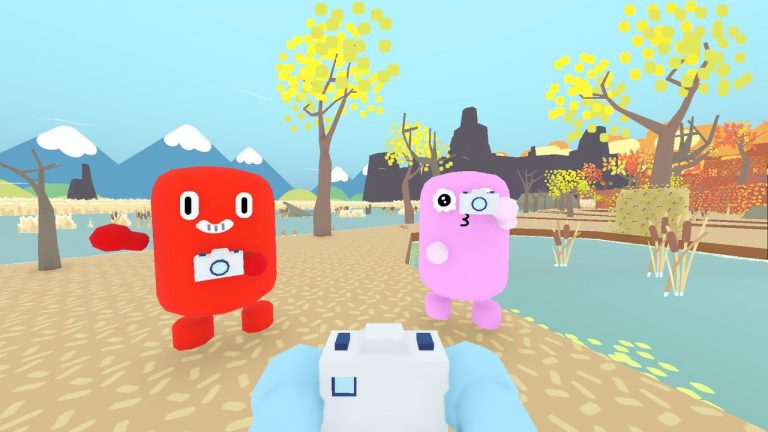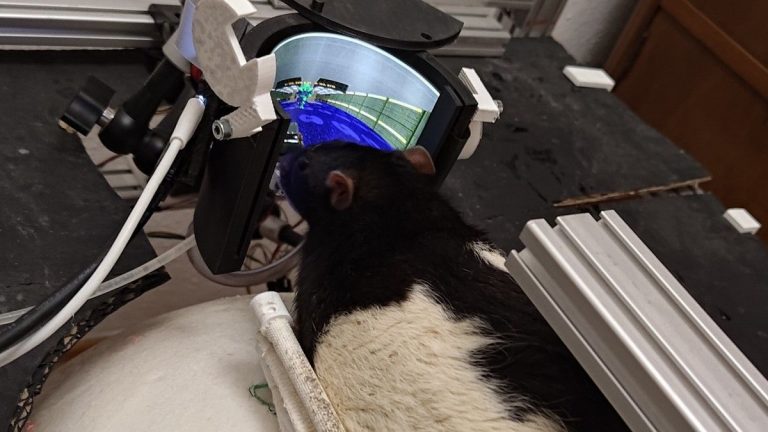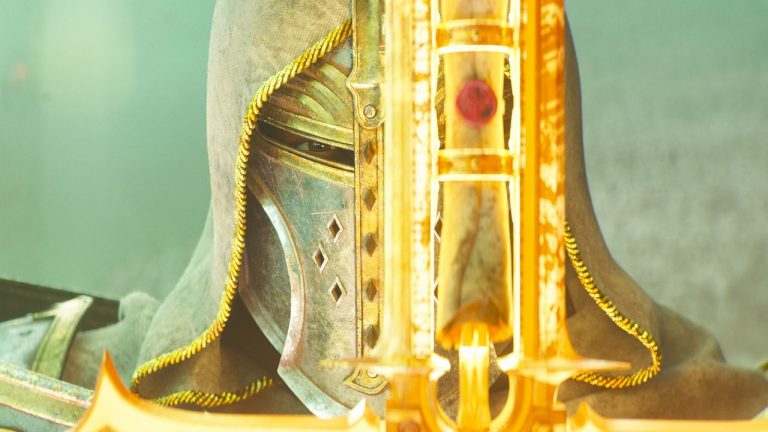Before my three hour session with Shadow of the Erdtree I was warned of two major bosses in the build: a difficult one in the northeast, and an even harder one in the northwest. It was assumed that I’d make a beeline towards these grand foes, but I did my best to avoid them. Forget the bosses—my most pertinent questions going into Shadow of the Erdtree were: What is the Land of Shadow like? What secrets is it hiding? How many swamps does it have? How much can I glean about its total size?
I played as a pre-built level 150 sorcerer with roughly equal aptitude in faith and intelligence. My spells included Miriam’s Vanishing, an intelligence sorcery that lets me teleport roughly two or three metres out of the way of enemies, and the Roar of Rugalea, which sends forth an oversized grizzly bear’s head to shock and damage enemies. I leaned heavily on the Sacred Smithscript Dagger I was equipped with by default, because its Ash of War let me send out powerful piercing throws that I shamelessly spammed a lot. Equipped as I was—with weaponry that didn’t require me to get up close and personal—I was prepared to do what I am exceptionally good at in Soulsbornering games. I escaped conflict by any means possible.
As big as the preview area was, I was frequently told by Bandai Namco that I was at risk of going out of bounds of the permitted play area
There are lots of shadows around the map by dint of the cliffs, chasms and skyscraper-high caves, not to mention the cindering Erdtree looming above the opening plain. My first glimpse is akin to that first exit onto the plateau in Limgrave: the horizon is full of detail and potential, yes, but it also feels like stepping into a fantasy-tinged 19th century landscape painting (think Caspar David Friedrich).
Somewhat undermining this impression is the giant bipedal fire pit roaming in the foreground. It kinda just moseys around, blithely murdering pilgrims at a nearby ruin and—if I get close enough—me. This big buffoon is hard to hate, but is almost certainly responsible for the dire state of the nearby ruins. Still, that could just as well be blamed on the Ghostflame Dragon lazing in a nearby swamp (two FromSoft essentials checked off at once). This walking furnace doesn’t pursue me, but reflexively attacks when I get too close. I expect many will make it their first objective to kill it.
I wasn’t that excited about Shadow of the Erdtree before my preview session, for the same reason I don’t care much for expansions for any game. I’ve seen the way the world unfolds in Elden Ring; I’ve seen the designers’ full intent. I don’t need an extension of that experience on a smaller scale, especially since Elden Ring needs scale to differentiate itself from the three Dark Souls games before it. I loved Elden Ring because it was massive but nevertheless intricately detailed. Though the dull rational side of me knows that millions of other players have made the same discoveries as me across the Lands Between, its combination of scale and density upholds the fantasy that I alone am the pioneer.
(Image credit: Bandai Namco)
Coming away from Shadow of the Erdtree, it’s obvious FromSoftware understands that a big part of this RPG’s appeal is not only the scale of its playground, but also the way the land folds in on itself in fascinating ways. A tiny crevice between a building and rock face might net you a chest in any other game, but in Shadow of the Erdtree, it might hide access to a whole other region tucked away on the other side. Following a river into the murky unpromising distance might net you nirnroot in another game: in Shadow of the Erdtree it instead leads to a narrow, barely perceptible crevice into a strange aquatic alter world (and crabs).
The playspace I was allowed to roam was carved dramatically in two by a huge valley through which a river charges, and yes, you can get down there, and yes, there are crabs. Down in those depths are—of course—further depths, but I also found a ghost by the mouth of a waterfall who talks of a coffin that can (bong rip) “convey its passenger upon a gentle cruise to the velvet garden of deepest purple.” That would make a nice change from the muted, melancholy dark browns and greens under a cinder-inflected grey sky.
This is FromSoftware operating in familiar melancholy grandeur mode: think Altus Plateau, or the more jagged limits of Liurnia, under a dusky red sky.
As big as the preview area was, I was frequently told by Bandai Namco that I was at risk of going out of bounds of the permitted play area. “You’re not allowed there,” I was often lightly scolded, while staring out into a landscape of abyssal depth. Those areas I weren’t allowed to go to looked at least as large as where I’d already been, not to mention whatever lay beyond. Just like the base game, map fragments of the Land of Shadow must be picked up for wayfinding, and I suspect the overall map size will dilate as more are found. Whatever the case, when Miyazaki said the map was around the size of Limgrave, he was underselling it a lot.
In my limited time with SotE, I didn’t see anything as bracing as, for example, that first bumble into Caelid, or Anor Londo. That may come, but the opening areas of the Land of Shadow isn’t aesthetically dissimilar to anything you’ve seen in the base game, though that may be FromSoftware holding its cards close to its chest.
(Image credit: Bandai Namco)
Gaol walking
The first boss is reportedly in Belurat, but don’t worry: I never really got there. I stumbled a little way into the depths of its stronghold, killed a few ginormous spiders, but then thought better of it. Turning around, I accidentally awakened the aforementioned sleeping dragon and, in the process of pissbolting Torrent-top, took refuge in a dark wood beyond which lay a cave which led eventually—and presumably via the backdoor—into the Belurat gaol. Rather than the smaller map meaning less to discover, it’s just made the expansion’s points of interest closer together.
The gaol is just another grim fantasy prison at first: empty cages hang from the ceiling, and there’s the distant sound of sobbing. I’m expecting to find a chest or maybe a mini-boss, but at the end of a narrow tunnel I enter a huge, cavernous, blue-hued underworld, awash in spectral mist and punctured by ice stalactites. The sickly inhabitants mostly wallow in their misery, though some like to take a swing. Unbelievably, these souls aren’t the most wasted down here.
I don’t know how much I should say about this particular area, except that it just keeps going. I navigated down a huge pit via suspended pots, but even then, downward keeps going down, and even then, comparing notes with a colleague, there seems to be more than one way to reach this nether region, which is perhaps SOTE’s equivalent to the vast Underground. Those pots, by the way, are those same memeable sentient Jar warriors that appear in the base game, though after Shadow of the Erdtree you may never look at them in quite the same way again.
Later, south of the giant Castle Erdis where I fought Rellana, Twin Moon Knight (I died once and then ran away), I found a field of ruins where a gang of oversize trolls with misshapen spines roughhoused with some out-of-their-depth knights. Past these hooligans I find an entry to the Ruined Forge Lava Intake, where lava was once used—presumably during happier times, if ever they were—in the smelting of metal. This dungeon isn’t as sprawling as the Belurat gaol but it’s a fun and moody traipse with some nice the-ground-is-literally-lava platforming tension, reminding me a bit of the ye olde Demon Ruins of Dark Souls (though replace Capra Demons with trolls).
I didn’t feel like I saw all of what the first map fragment depicts in the Land of Shadow, and that’s assuming those two major bosses led to cul-de-sacs in my preview build (one of them, I’m told, guards the gate to much, much more). I found one tiny dungeon with nothing but a boss fight—the Blackgaol knight—and while I could be wrong, precedent tells me that there will be a small handful of these alone in the areas I explored.
But there’s a lot of assumptions involved in my impressions. Elden Ring’s amazing forward momentum relied on the simple pleasure of finding and exploring new frontiers. As Hidetaka Miyazaki told Edge in 2021, he doesn’t play the launch versions of his games because he “wouldn’t get any of the unknowns that the fresh player is going to experience.” After my brief hands-on, I can confirm the most important element is present in Shadow of the Erdtree: curiosity is amply rewarded.

